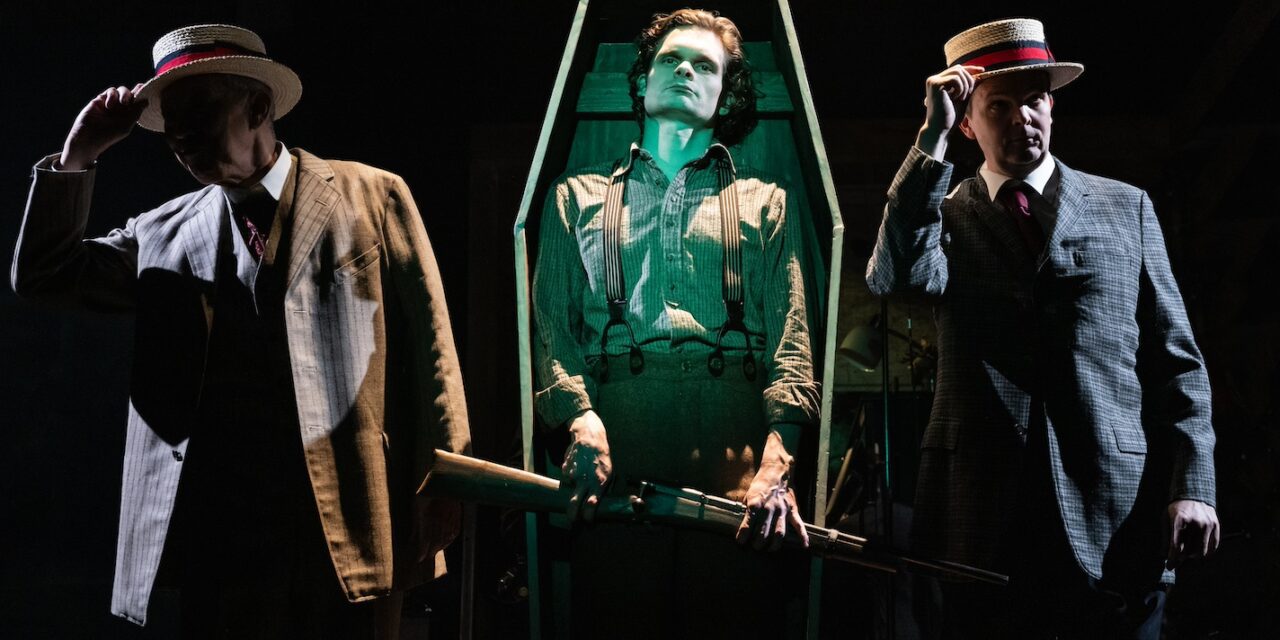Theater Review by Samuel L. Leiter . . . .
Like many reviewers, I’m always being asked what shows I’ve liked lately. Normally, my octogenarian brain is too crammed with recent shows to say at once what I really liked—or even what I really hated. However, I’m now armed and ready with a title for the next person to question me. I’m talking about Dead Outlaw, an appealing new chamber musical presented by Audible at their Minetta Lane Theatre in Greenwich Village. It’s probably a little too outre for a Broadway transfer (I thought the same about Illinoise, so what do I know?), but I think it would click in an Off-Broadway commercial run.
First off there’s the infectiously catchy score, mixing folk-rock, hard rock, and traditional pop, by David Yazbek (The Band’s Visit, Tootsie) and Erik Della Penna (who sings and plays three instruments in the onstage band). Then there’s the imaginative book by Itamar Moses, in a huge shift from his recent political discussion drama, The Ally.
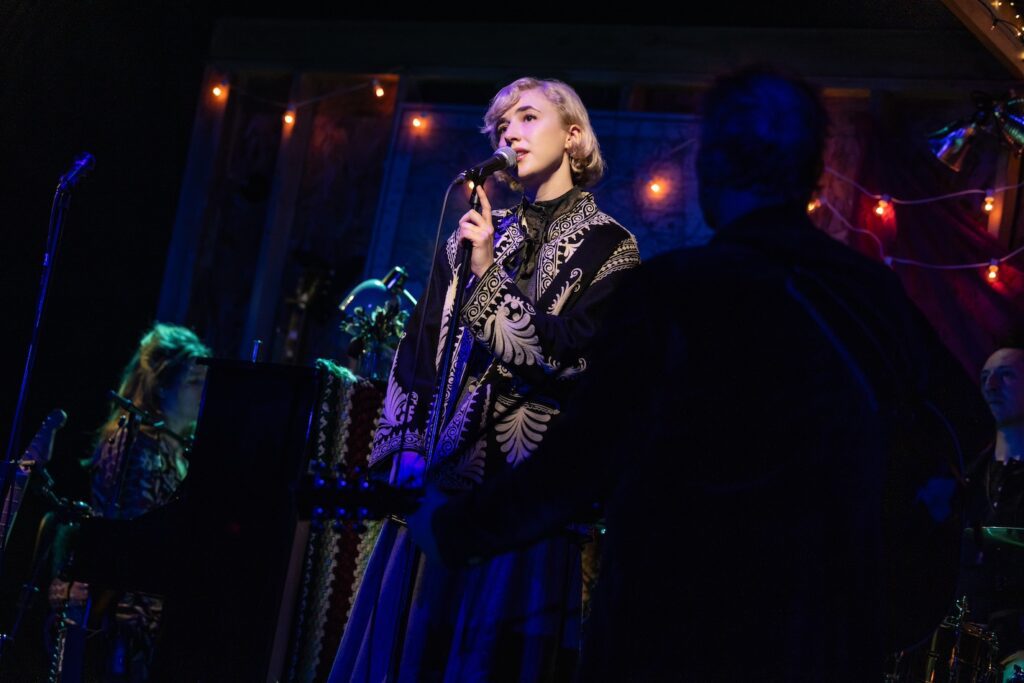
This 100-minute show, imaginatively directed by David Cromer (A Prayer for the French Republic), is about an actual bandit named Elmer McCurdy, born in Maine in 1880 and shot dead by an Oklahoma posse in 1911, after a life of crime during which he changed his name several times as he moved from town to town. The most striking thing about McCurdy was not his life, however, but his death, as his corpse was mummified with arsenic by a coroner (Eddie Cooper) hoping to keep his remains intact until someone could claim them.
Eventually, people became curious about the result. Such curiosity was translated into cash when McCurdy’s body was put on display in B-movies, carnivals, and amusement parks. Often, before interest petered out, he’d be shown standing in a pinewood coffin with signs like “The Bandit Who Wouldn’t Give Up.”
Ultimately, the desiccated corpse’s whereabouts—hanging in a scary amusement park attraction—were discovered by a crew filming TV’s Six Million Dollar Man. When located, one of poor Elmer’s arms had fallen off. Finally, the long-dead, second-rate brigand was put to rest in 1977, with the provision that his remains be encased in concrete (wait for that iron chute to appear on the right).
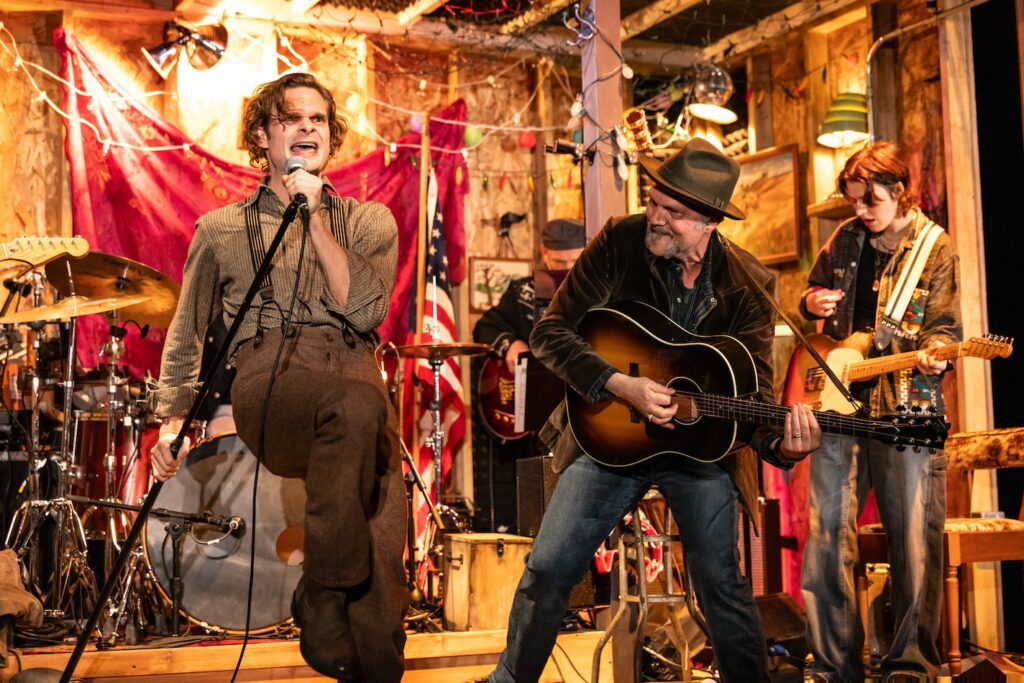

Although it could highlight the satire a bit more, Dead Outlaw—like Side Show, a musical about conjoined twins—mocks P.T. Barnum hucksterism, where anything that makes a buck, no matter how questionable, is acceptable. Of course, the public’s unquenchable thirst for freakish sensationalism gets its lumps as well.
Moses’s book takes us through McCurdy’s life from childhood to maturity to death. It’s structured as a tale narrated to us in song and speech by a Bandleader-singer-musician (the exceptional Jeb Brown, rocking a wicked guitar on numbers like “Dead”) with a hand-held mic. Backed by five musicians, the Bandleader sometimes plays other roles as well.
A company of six versatile supporting players (Eddie Cooper, Dashiell Eaves, Ken Marks, Trent Saunders, Thom Sesma, and—the sole female—the delicious Julia Knitel) also play multiple roles and each has a moment or two of musical glory. One of the most memorable numbers, “Andy Payne,” about a transcontinental runner, is knocked out of the theater by the dynamic Trent Saunders. Unfortunately, its narrative, too loosely connected to McCurdy’s story, seems strangely out of place.
That story shows the restless, ornery McCurdy landing a decent job as a plumber and even winning a woman’s affection before drink turns him to crime as a blundering safecracker, especially when it comes to blowing up money-bearing trains. His fate is to end up worth more dead than alive when his remains are passed from huckster to huckster over the years.
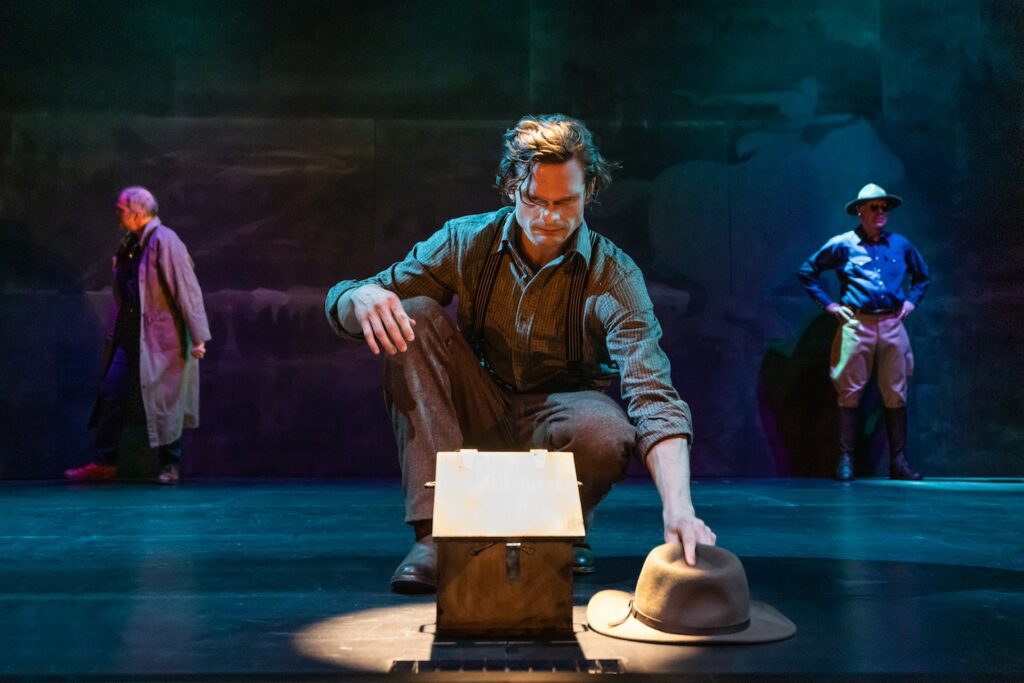

These scenes are sometimes interspersed with those set in 1976 featuring white-coated Los Angeles coroner Dr. Thomas Noguchi (Thom Sesma, sharp as a scalpel), explaining his findings as he hovers over a gruesome model of McCurdy’s naked corpse. Noguchi, otherwise dryly scientific, scores with a sensational number when, mic in hand, he bursts into the Sinatra-style “Up to the Stars,” about the Hollywood corpses he’s seen, from Marilyn and Elvis to Natalie and Sharon.
Much of the action requires McCurdy to either lie lifeless on an autopsy table or stand inside a coffin, which is often trundled about on wheels, his hands holding a prop rifle across his body in keeping with the sleazy way he’s sold to the public. Durand, who stood out in the recent Broadway musical Shucked, couldn’t be better in the role.
The slender, long-haired star’s imposing chops (demonstrated in songs like “I Killed a Man in Maine” and “No One Knows Your Name”) are complemented by his chiseled features combining strong cheekbones, high forehead, deep-set eyes, short nose, and lantern jaw. (A young Martha Plimpton comes to mind.) Seeing him standing absolutely motionless for long stretches in that coffin, with Gilbert’s eerie lighting highlighting his sculptured face, can be pretty darned creepy.
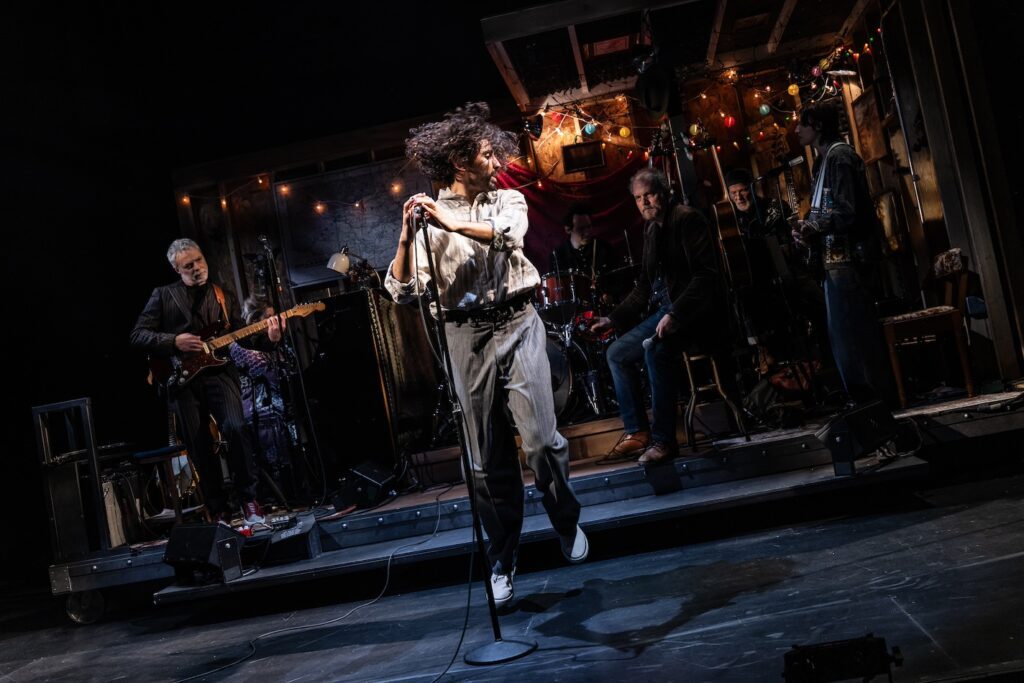

Arnulfo Maldonado’s flexible set, designed for multiple locales, is centered on a room-like bandstand stage that cast and crew must sometimes move into other positions. It’s a case of functionality over aesthetics, although Heather Gilbert’s dramatic lighting goes a long way to fill the gap. Sarah Laux hits the jackpot with her spot-on period costumes, each perfectly defining its wearer, helping the actors clearly differentiate their separate roles. Kai Harada and Joshua Millican’s sound design, though, despite the use of mics, doesn’t always help the dialogue and lyrics come through with crystal clarity, and one or two numbers could lower the music’s volume to let the words be heard more distinctly.
Despite its title, there’s nothing dead about this lively musical. Dead Outlaw doesn’t deserve to be buried when its run closes. Hopefully, it has a longer life waiting for it elsewhere.
Dead Outlaw. Through April 14 at the Minetta Lane Theatre (18 Minetta Lane, between MacDougal Street and Sixth Avenue, Greenwich Village). www.deadoutlawmusical.com
Photos: Matthew Murphy


